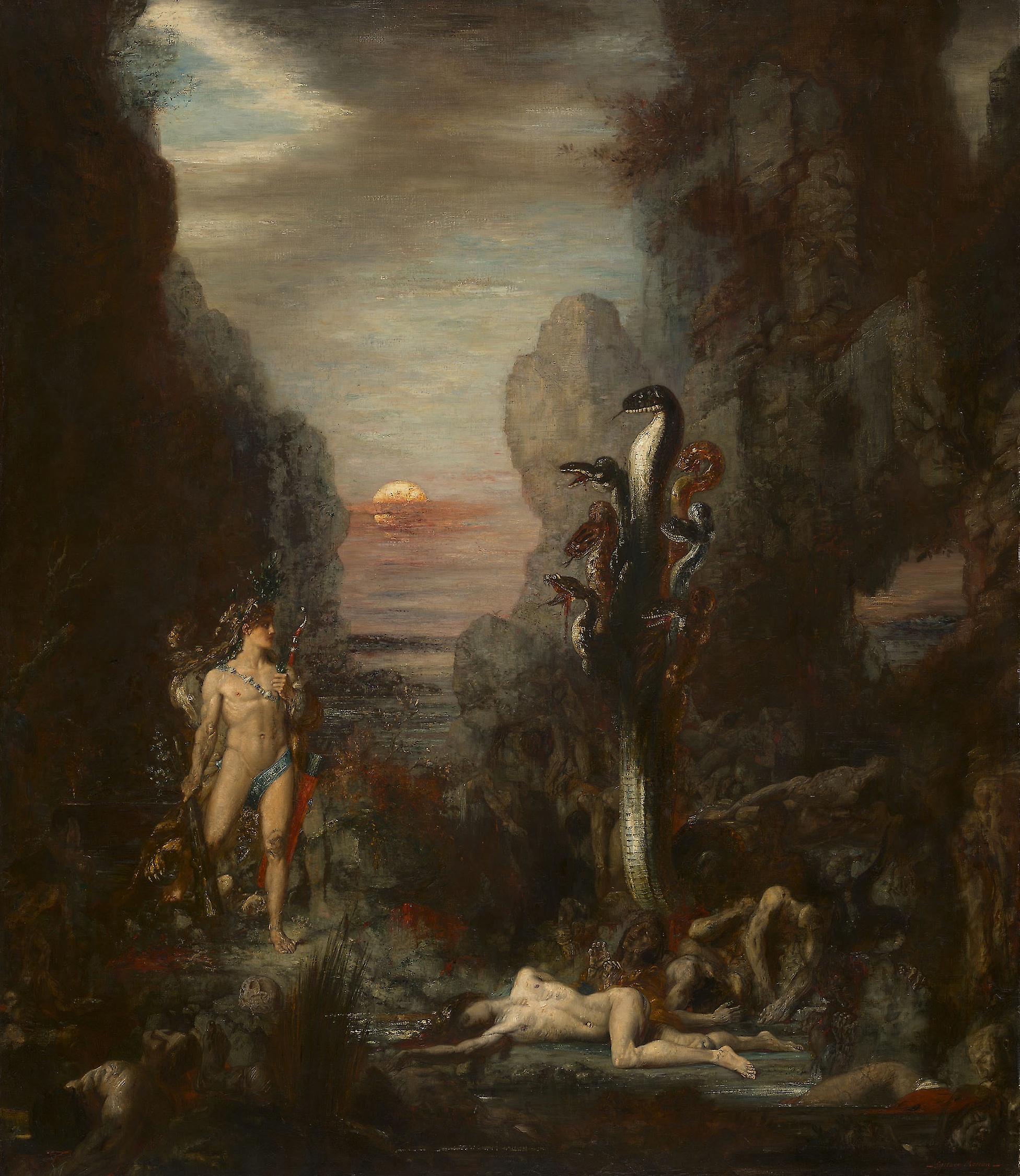Gustave Moreau developed a highly personal vision that combined history, myth, mysticism, and a fascination with the exotic and bizarre. Rooted in the Romantic tradition, Moreau focused on the expression of timeless enigmas of human existence rather than on recording or capturing the realities of the material world. At the same time his art is very, very decorative.
Long fascinated with the myth of Hercules, Moreau gave his fertile imagination free rein in Hercules and the Lernaean Hydra. Looming above an almost primordial ooze of brown paint is the seven-headed Hydra, a serpentine monster whose dead and dying victims lie strewn about a swampy ground. Calm and youthful, Hercules stands amid the carnage, weapon in hand, ready to sever the Hydra’s seventh, “immortal” head, which he will later bury.
Moreau seems to have intended this mythological painting to express contemporary political concerns. He was profoundly affected by France’s humiliating military defeat by Prussia in 1871. Whether or not Hercules personifies France and the Hydra represents Prussia, this monumental work portrays a moral battle between the forces of good and evil, and of light and darkness, with intensity and power.
P.S. Visit the lovely Gustave Moreau Museum with us here or check out how to show up in a gym with Hercules! ;-)


 Gustave Moreau
Gustave Moreau